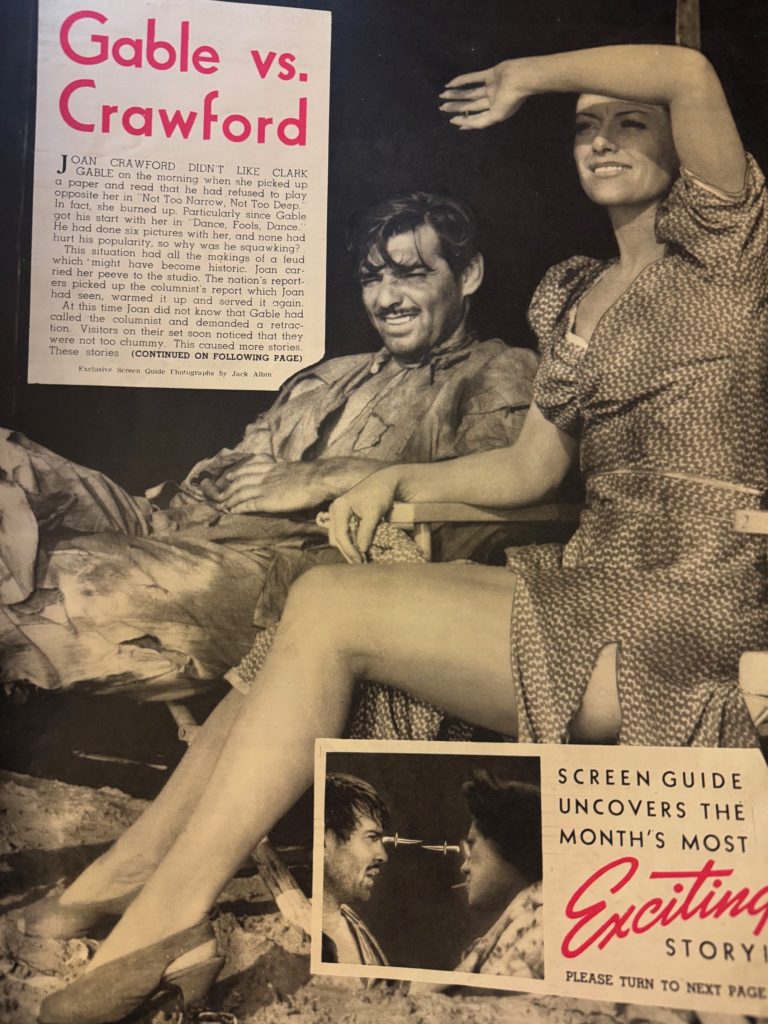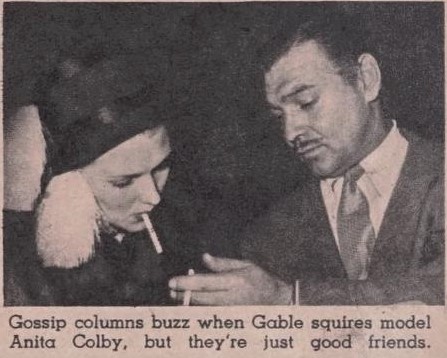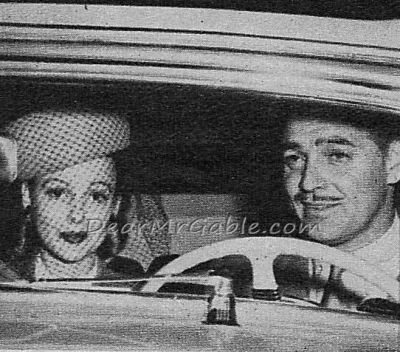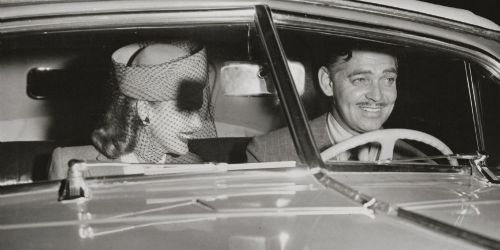
{New Article} 1940: Gable vs. Crawford

This is a new short little article gossiping that Clark Gable and Joan Crawford were not getting along on the set of Strange Cargo. This was actually mentioned in a few Gable biographies. Clark did not want to be in the film as he did not like the script (I can’t say I blame him). Joan’s career was on a downturn and she needed a hit so she was paired with Clark, who was just coming off Gone with the Wind success. Joan was a bit miffed at this, since just nine years earlier, she was the big star and Clark was getting his feet wet playing her love interests in films like Dance Fools Dance and Possessed. Also, of course, Clark and Joan had previously been romantically involved off and on for years on the sets of their prior films. Not anymore. Clark was happily married to Carole Lombard, whereas Joan was single after recently divorcing Franchot Tone. Joan lamented later to a biographer, “I didn’t think Clark would make a good husband–a great lover, a fine friend, but I imagined him an unfaithful husband. I didn’t think he would be satisfied with only one woman, even me, and he would face endless temptation. He never had to ask. I don’t know if he even knew how to. There was always an endless supply of attractive young things, who knew quite well how to ask, throwing themselves on him. I was also certain that he would prefer not having as a wife an actress with a career on par with his, that he would prefer someone who could be happy simply devoting herself entirely to him. I was wrong in the way I judged him. I thought he liked to live in the moment, to be free of responsibilities. Then along came Carole Lombard.”
Gable vs. Crawford
Screen Guide,
February 1940Joan Crawford didn’t like Clark Gable on the morning when she picked up a paper and read that he had
refused to play opposite her in “Not Too Narrow, Not Too Deep.” In
fact, she burned up. Particularly since Gable got his start with her in “Dance
Fools Dance.” He had done six pictures with her, and none had hurt his
popularity, so why was he squawking?This situation had all the makings of a feud which might have become historic. Joan carried her
peeve to the studio. The nation’s reporters picked up the columnist’s report
which Joan had seen, warmed it up and served it again.At this time Joan did not know that Gable had called the columnist and demanded a retraction.
Visitors on their set soon noticed that they were not too chummy. This caused
more stories. These stories made Screen Guide’s editors investigate. They found
these facts.Gable originally had not liked this new role. He didn’t like being an out-and-out heel throughout
the entire film. He beefed. So writers got busy, revamped his role, saved his
screen character with a last minute regeneration and retitled the picture “Strange
Cargo.” Clark thus got over his objections before the feud story even started.
When the situation was ironed out by revealing this to Joan, she said, “It’s
not so funny what gossip can do, and it’s a devil of a note when an actress
must either be in love with her leading man or else hate him!”Fly-by-night feuds like this are not uncommon among picture people, but permanent hates are really
very rare—no matter what you read in a sensation-minded picture magazine. The
first bitter imbroglio in movies occurred years ago, and involved Eric von
Stroheim and Mae Murray. Von, directing her in “The Merry Widow,” decided it
would be a great idea to have a cigarette actually shot out of her mouth. She
vowed she would never work with him again.Today such foolishness is ruled out by business methods, but trouble still brews
sometimes. Katy Hepburn and Ginger Rogers had a disaffection because Hepburn
leaned out of a window one day as Ginger was passing and doused her with water,
just as a gag. Later the two appeared together in “Stage Door,” and remained
icy.Olivia de Havilland, for a long time, was not too happy about appearing with Errol Flynn. Her reason
was logical enough: he got all the best scenes; she was just a stooge. Most
antipathies between stars are the outgrowth of such constant teaming. Sooner or
later one or both members of a team will feel the pinch. Fred Astaire used to
be the main objector to costarring with Ginger Rogers. If he clicks with
Eleanor Powell he will have proved himself right. Ann Sothern and Gene Raymond
hardly had a civil word for each other after swooning in each other’s arms for
the cameras. Jeanette MacDonald and Nelson Eddy patched things up.Frequently stars start out as enemies, and end up as friends. That can work the other way, too.
In “Mr. Smith Goes to Washington,” Jimmy Stewart had all the choice scenes, for
the first time in years. Jean Arthur was secondary. Do you think she’ll want to
co-star with Jimmy again? That’s right—you’re—well—ask Kay Kyser.





One Comment
Karen Hannsberry
Enjoyed this interesting article. (I love Strange Cargo, though!)
Karen